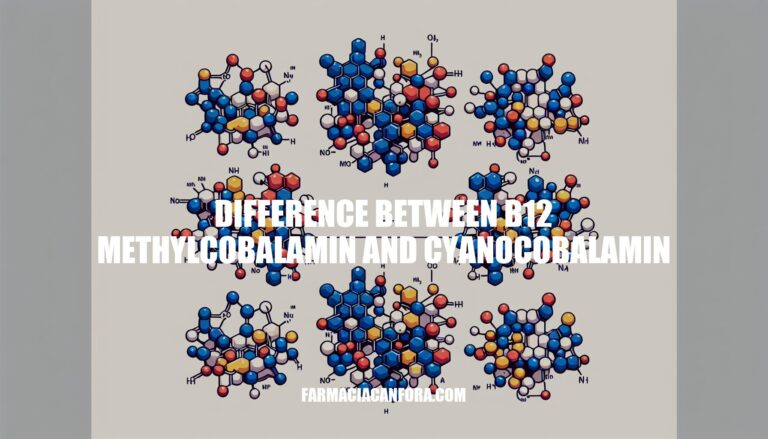


Vitamin B12 is crucial for maintaining healthy nerve cells, producing DNA, and forming red blood cells. Without enough B12, one might experience fatigue, nerve damage, and cognitive issues. This introduction will explore the importance of vitamin B12 and focus on the differences between its two common forms: methylcobalamin and cyanocobalamin. While both are used to treat B12 deficiencies, they differ in their sources, absorption rates, and potential benefits.
Both methylcobalamin and cyanocobalamin are forms of vitamin B12, sharing a core structure that includes a cobalt ion at the center of a corrin ring. The key difference lies in the group attached to the cobalt ion:
) attached to the cobalt ion.
) attached to the cobalt ion.
This difference affects their stability and how they are processed in the body. Cyanocobalamin is synthetic and more stable, while methylcobalamin is naturally occurring and directly usable by the body.
Methylcobalamin is a natural form of vitamin B12 found in animal-based foods such as fish, meat, eggs, and dairy products.
Cyanocobalamin, on the other hand, is a synthetic form of vitamin B12 that is not found in nature. It is commonly used in supplements and fortified foods due to its stability and cost-effectiveness.
Both forms are essential for maintaining good health, but they come from different sources and have distinct characteristics.
Bioavailability:
Absorption:
Retention:
Methylcobalamin and cyanocobalamin are two forms of vitamin B12, each with distinct characteristics and health benefits:
Both forms are effective in treating B12 deficiency, but individual responses can vary based on factors like age and genetics.
Methylcobalamin:
Cyanocobalamin:
Vitamin B12 is crucial for maintaining healthy nerve cells, producing DNA, and forming red blood cells. Two common forms of vitamin B12 are methylcobalamin and cyanocobalamin, which differ in their sources, absorption rates, and potential benefits.
Methylcobalamin is a natural form found in animal-based foods, while cyanocobalamin is synthetic and commonly used in supplements and fortified foods due to its stability and cost-effectiveness. Bioavailability-wise, methylcobalamin is more readily available for neurological functions and cellular health, whereas cyanocobalamin requires conversion to active forms in the body.
Absorption rates also differ, with cyanocobalamin being slightly better absorbed but with lower retention. Methylcobalamin has been shown to be retained better in the body compared to cyanocobalamin.
Both forms are effective in treating B12 deficiency, but individual responses can vary based on factors like age and genetics. In terms of safety, both methylcobalamin and cyanocobalamin are generally safe, with rare side effects including headache, nausea, and diarrhea. Cyanocobalamin contains a small amount of cyanide, which is efficiently detoxified by the body.
Ultimately, the choice between methylcobalamin and cyanocobalamin depends on individual needs and preferences.